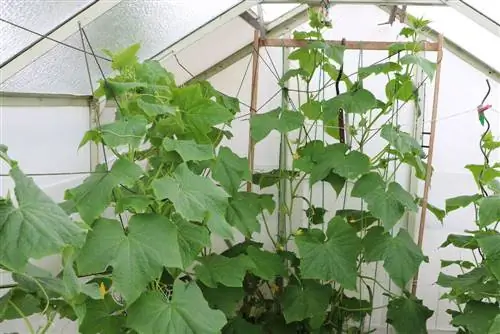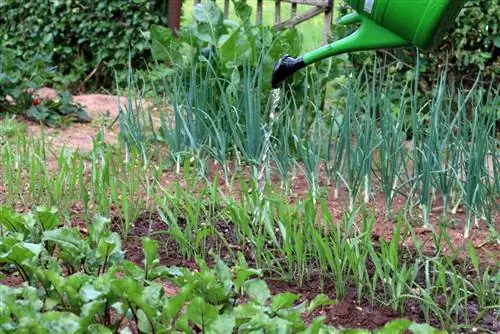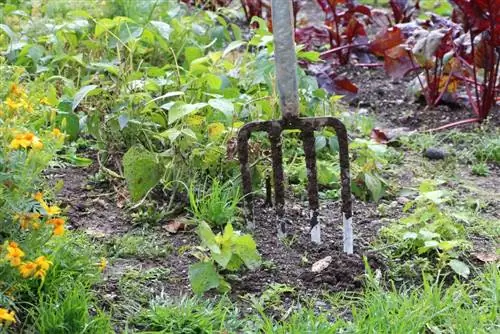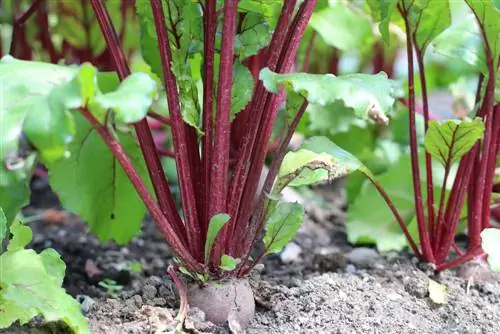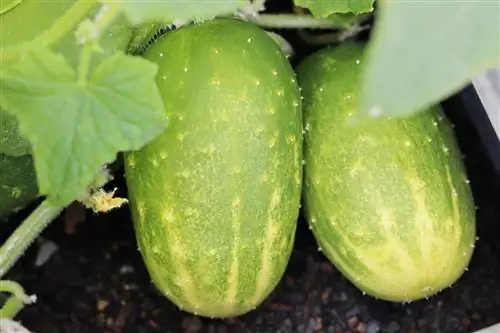- Author admin [email protected].
- Public 2023-12-17 03:39.
- Last modified 2025-01-24 12:45.
If you want to make the most of fruits and vegetables in order to increase yields or be able to harvest larger fruits, you just need the right basic knowledge - because the procedure doesn't differ too much for the different plants. However, some factors and special features must be taken into account when caring for the plant in order to conserve the plant's strength and really have a chance of increasing the yield. Here, anyone interested can find out how austerity works in detail and what needs to be taken into account.
Simply
Pinching involves the removal of so-called stingy shoots, which generally do not bear fruit and therefore do not produce any yield - but do consume energy. The aim of the measure is to train the plant to achieve a high yield or to produce larger fruits, i.e. to direct energy consumption into the formation of fruits. Whether the measure is really necessary and useful is controversially discussed for many plants.
Tip:
If there is uncertainty as to whether the measure is worth the effort, a text can be carried out. To do this, one of two identical plants in the same location is harvested and one is left natural and the yield is then compared. In the following year, the thinning can then be done or omitted, depending on the results of the test.
Time
The sooner the better. Stingy shoots should be removed as early as possible and continuously. This way:
- The resulting wounds are very small and heal quickly
- only a few nutrients and energy were used to grow the shoots
- the energy loss is low
- the plant is stimulated to produce fruit early on
In addition, stripping should be done in the morning so that the interface or wound can dry and close as quickly as possible. For these reasons, it is ideal to only carry out the care measure in dry weather.
Aids
Usually the thumbnail is enough to pinch out or pinch off the stingy shoots. However, small scissors or a knife can also be used. The important things are:
- sharp blades for a clean cut
- Cleanliness so as not to bring germs onto the interface
- small size for targeted cuts
Procedure
When thinning vegetables and fruit, the shoots between the main stem and side shoots - i.e. in the leaf axils - are usually removed. Shoots that do not have buds and therefore would not produce fruit are removed. However, if these are removed early as recommended, any bud formation cannot yet be seen. Therefore, attention should be paid to the special features of thinning for each plant species.
Cuttings
If the shoots have been left on the mother plant until they have reached a length of five to ten centimeters, in some cases they can be used directly as cuttings. It is usually enough to put them in the ground at a suitable distance from other plants and water them.
For heavily leafy shoots, the lower leaves should be removed before inserting into the substrate.
Stability
When fruit or vegetable plants are thinned out, they usually become less bushy and therefore potentially unstable. It can therefore make sense to fasten the plants with rods or a scaffold and thus prevent them from breaking off.
Use the peppers
Vegetable or snack peppers, chili, hot peppers - they all belong to the same plant family. It doesn't seem to be absolutely necessary to reduce peppers, but some recommend it. The thinning is carried out as already described. Small, weak and fruitless shoots between the main stem and strong side shoots are removed as early as possible. Thinning is carried out continuously until the fruits are formed and already on the young plants. In addition to thinning out the peppers, it is recommended to harvest the first fruit when it is still unripe.
In this way, the pepper does not take a “break” before new fruiting bodies are formed. Instead, the formation of pods is stimulated. Another tip - at least for larger pepper varieties - is to remove the so-called royal flower. This appears from a plant height of around 40 cm and sits between the main shoot and the top side shoot. If it is pinched off, this should stimulate the growth of leaves and shoots. There's no guarantee, but it's definitely worth a try.
Maximizing Physalis
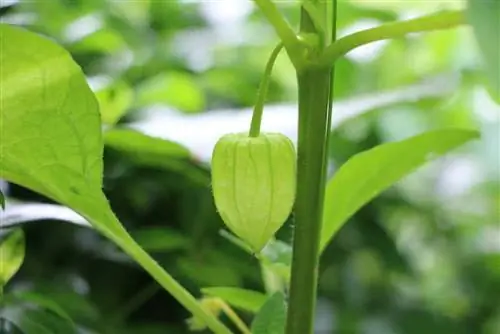
Pinching out of the physalis or cape gooseberry, as it is also called, is controversial. Possible benefits are:
- better fruit ripening thanks to more light
- faster and easier harvesting
- the plant is thinned out and is therefore less bushy
A possible but crucial disadvantage of thinning, especially with Physalis, is the formation of flowers in the leaf axils. The fruit plants are created exactly where thinning is normally recommended. An early removal of the supposed miserliness is therefore not recommended. Instead, you should wait until the shoots are as long as possible so that you can see whether buds are being formed or not.
Tip:
The apparent need for pruning to improve sun exposure can be prevented by keeping a large distance from other plants.
Cucumbers
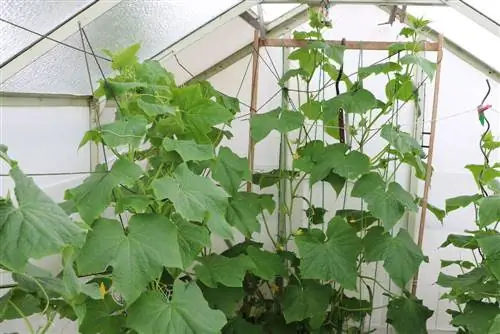
Pruning out cucumbers can have more reasons than just increasing the yield. In this way, thinning in the lower area prevents the cucumbers from hanging on the ground. To do this, buds and side shoots are removed up to a height of around 50 to 60 centimeters. If the cucumbers are grown in a greenhouse, pinching out the tips can prevent them from hitting the ceiling and give the cucumbers more light and air. When checking the size, it is important that the main shoot is not shortened. Only additional shoots on the side shoots are eliminated. In addition, with cucumbers it is usually sufficient to use them once rather than continuously.
Use the tomatoes
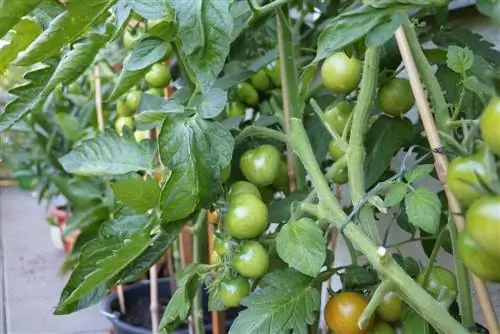
Pinching out tomatoes often makes a lot of sense, as removing the shoots leads to increased height growth and larger fruits. At the same time, caring for the plants is very simple, because the shoots appear early and always in the same places - in the leaf axils. Fruit shoots sprout directly from the main stem. Stingy shoots arise between the trunk and the leaf shoots. So there is no risk of fruit-bearing shoots being accidentally removed.
Therefore, thinning tomatoes can be done very early. In addition, it should be repeated continuously, as the miserliness keeps developing. It is important to stabilize the plant - even smaller and comparatively compact cocktail tomatoes. However, the compact growing varieties, such as cocktail, vine and bush tomatoes, do not necessarily have to be exploited. This usually does not increase the yield. Harvesting is made easier thanks to the thinned shape.
Optimize the grapevine
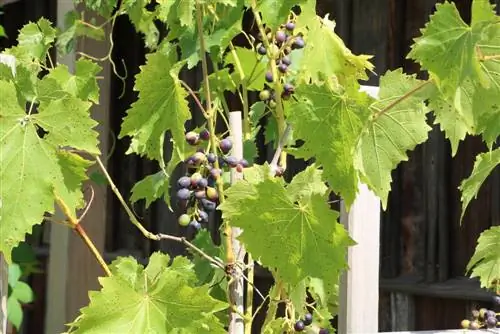
Pruning grape vines is not well known, but it is important - especially during the first few years when the vine is trained into the desired shape. Again, the shoots that grow between the main trunk and side shoots are removed. Unlike the winter pruning that is typical for grape vines, thinning must be done in spring and summer. If the wine is not cultivated for yield, but as a privacy screen, the care measure can also be canceled.
Conclusion
Many hobby gardeners do not dare to thin out vegetable and fruit plants for fear of removing the wrong shoots and thereby affecting the harvest. With the right instructions and a little practice, these concerns can soon be a thing of the past and miserliness can easily be eliminated. Although the nursing measure is not always necessary, it is often useful. You can also test whether it benefits your own plants without much effort.


